Major Deities of Ancient Egypt
The major deities of ancient Egypt played a central role in the spiritual and cultural life of the ancient Egyptians. These gods and goddesses were believed to control natural forces, oversee the afterlife, and embody essential aspects of existence. Their stories, symbols, and temples reveal a rich tapestry of religious beliefs that shaped society and influenced subsequent civilizations.
Ra: The Sun God
Ra was one of the most important deities in ancient Egyptian religion, revered as the Sun God and considered the creator of the world. He was depicted as a falcon-headed god crowned with a solar disk encircled by a cobra, symbolizing his power and divine authority. As the central figure of Egyptian mythology, Ra was believed to journey across the sky during the day in his solar barque, bringing light and life to the world, and then traveling through the underworld at night to be reborn each morning.
Ra was often associated with other gods and aspects, leading to various combined deities such as Amun-Ra and Re-Horakhty, reflecting his significance in different regions and periods of Egyptian history. Temples dedicated to Ra, like the famous Sun Temple at Heliopolis, served as important religious centers and symbolized the eternal power of the sun. Worship of Ra included rituals that emphasized his role as the life-giving force and protector of the pharaoh, reinforcing the divine right to rule.
Aten: The Disk of Sun Rays
Aten was a unique deity in ancient Egyptian religion, represented as the disk of the sun rays radiating outwards. It symbolized the sun’s life-giving power and was worshiped primarily during the reign of Pharaoh Akhenaten, who promoted Aten as the supreme and sole deity. Unlike traditional gods with anthropomorphic forms, Aten was depicted as a sun disk with outstretched rays ending in hands, conveying the idea of divine blessing and support.
During Akhenaten’s rule, Aten became the central focus of worship, replacing traditional gods like Amun or Ra. This period, known as the Amarna Epoch, marked a significant shift in religious practices, emphasizing the worship of one god and downplaying other deities. Temples dedicated to Aten were constructed, and the royal family was depicted in art as directly connected to the disk, highlighting the deity’s importance in legitimizing the pharaoh’s divine authority.
As a solar disk, Aten embodied the concept of divine omnipresence and influence, symbolizing the brightness, warmth, and sustenance the sun provides to the world. Its imagery reinforced the idea that the pharaoh and the Egyptian state were under the direct patronage of this vital deity, making Aten a central figure in the religious and political landscape of ancient Egypt during the Amarna period.
Osiris: God of the Underworld
Osiris is one of the most important deities in ancient Egyptian religion, revered as the god of the underworld and the afterlife. He is often depicted as a mummified king with a white crown of Upper Egypt and holding symbolic items such as the crook and flail, which represent kingship and authority. Osiris was believed to play a key role in judging souls and overseeing the process of resurrection, ensuring the eternal life of righteous individuals. His story is closely linked with themes of death, rebirth, and fertility, symbolizing the cycle of life and afterlife that was central to ancient Egyptian culture. As a major deity, Osiris was also associated with the annual flooding of the Nile, which brought fertility to the land, further reinforcing his significance in both spiritual and agricultural life.
Isis: Goddess of Fertility and Magic
Isis was one of the most important deities in ancient Egyptian religion, renowned as the goddess of fertility, magic, and motherhood. She played a vital role in Egyptian mythology, symbolizing the ideal mother and wife, as well as the protector of nature and the dead. Isis was worshipped extensively throughout Egypt and beyond, embodying both nurturing and powerful magical qualities.
- Goddess of Fertility: Isis was associated with fertility and the nurturing of children, ensuring growth and abundance in agriculture as well as helping women during childbirth.
- Goddess of Magic: She was considered a master of magical spells and protective charms, believed to have performed powerful magic to heal and safeguard individuals and the land.
- Protector of the Dead: Isis was vital in the afterlife beliefs, particularly in the resurrection of her husband Osiris and protecting souls on their journey to the afterworld.
- Symbolism: Often depicted with a throne-shaped crown or a solar disk encircled by cow horns, symbolizing her divine authority and connection to the sun god Ra.
Horus: Falcon-headed Sky God
Horus is one of the most significant deities in ancient Egyptian mythology, known primarily as the falcon-headed sky god. He symbolized kingship, protection, and divine authority, often associated with the ruling pharaohs, who were regarded as his earthly representatives. In mythology, Horus is the son of Osiris and Isis, and his mythological struggles with Seth, the god of chaos, represent the ongoing battle between order and disorder. The falcon, a bird renowned for its keen eyesight and swift flight, embodied Horus’s qualities of vigilance and power. Temples dedicated to Horus, such as the famous Temple of Horus at Edfu, highlight his importance in religious practices and royal iconography. Overall, Horus played a central role in maintaining cosmic stability and reinforcing the divine right of the pharaohs in ancient Egypt.
Anubis: God of Mummification and the Dead
Anubis is a prominent deity in ancient Egyptian religion, renowned as the god of mummification and the protector of the dead. He played a vital role in the journey of the soul to the afterlife, overseeing the proper embalming process and guiding souls to judgment.
- Often depicted as a man with a jackal head, symbolizing his connection to cemeteries and protecting graves.
- Associated with funerary practices and the sacred rites necessary for preparing deceased individuals for the afterlife.
- Performed the weighing of the heart ceremony, which determined the fate of souls during the judgment before Osiris.
- Iconography of Anubis includes the use of the jackal symbol and the black color, representing rebirth and the mummified flesh.
Thoth: God of Wisdom and Writing
Thoth was one of the major deities in ancient Egyptian religion, recognized as the god of wisdom, writing, and knowledge. Often depicted with the head of an ibis or as a baboon, he was considered the scribe of the gods and a master of hieroglyphics. Thoth played a crucial role in maintaining the universe’s order by mediating between good and evil and ensuring the balance of cosmic forces. His influence extended to law, science, medicine, and the invention of language, reflecting his importance in Egyptian life and religion.
Seth: God of Chaos and Disorder
Seth, also known as Set, is a major deity in ancient Egyptian religion, primarily associated with chaos, disorder, storms, and violence. Despite his reputation as a destructive force, he played a vital role in the ancient Egyptian pantheon by symbolizing the necessary aspects of change and renewal.
- Origin and Symbols: Seth is often depicted as an enigmatic creature with a composite appearance, featuring a combination of animal traits such as a head resembling that of a mysterious, unknown animal, and a tall, slender body. His symbols include the Seth animal, a staff, and a shen ring.
- Mythological Role: Seth’s most famous myth involves the death of Osiris, his brother, which positions him as both an antagonist and a complex figure embodying chaos that disrupts the order established by other gods. His actions often represented the unpredictable forces of nature.
- Cult and Worship: Although initially regarded with fear and suspicion, Seth was also worshipped in certain regions, especially in the western desert and during specific festivals, highlighting his dual nature as a deity of chaos and a protector against external threats.
- Legacy: Over time, Seth’s role evolved, and he was sometimes regarded as a defender of Egypt against foreign enemies. His complex character embodies the balance between chaos and order, a fundamental concept in ancient Egyptian belief systems.
Sophia: Goddess of Water and Fertility
In ancient Egyptian mythology, major deities played crucial roles in explaining the creation of the world and overseeing various aspects of life. Among these, water and fertility were vital themes represented by powerful goddesses who symbolized the life-giving and nourishing qualities of the Nile and the land.
Sophia, although primarily known as a divine figure of wisdom in later philosophical traditions, can be imaginatively associated with water and fertility as a goddess embodying the nurturing aspects of nature. She would be revered as a deity who sustains life through her dominion over water, encouraging growth and abundance in the fields. Her worship would focus on ensuring the rejuvenation of the Nile each year, supporting agriculture, and fostering fertility among the people.
As a goddess of water, Sophia would be depicted as an elegant figure, perhaps holding symbols like a water vessel or offering palms of water, emphasizing her connection to aquatic abundance. Her role in fertility rites would involve promoting prosperity and ensuring the sustenance of crops and the well-being of communities. In ancient Egyptian belief, deities linked to water and fertility were central to maintaining harmony in the natural and social worlds, and Sophia would exemplify these essential divine qualities.
Deities of Nature and Agriculture
In ancient Egyptian mythology, deities associated with nature and agriculture played a vital role in ensuring the prosperity and harmony of the land. These gods and goddesses symbolized the cycles of fertility, growth, and the natural forces that sustained life along the Nile River. Through their reverence, the Egyptians expressed their deep connection to the environment and their dependence on divine blessings for successful harvests and a bountiful existence.
Geb: Earth God
Geb was an important deity in ancient Egyptian mythology, revered as the god of the Earth and associated with the fertile land, vegetation, and agriculture. He was often depicted as a man lying beneath the sky goddess Nut, symbolizing the Earth enveloped by the sky. Geb’s role was vital in the agricultural cycle, as he was believed to give life and sustenance to crops and plants, ensuring fertility of the land. Worship of Geb underscored the Egyptians’ deep connection to nature and their reliance on the natural environment for survival. His influence was reflected in various rituals and offerings aimed at securing bountiful harvests and maintaining harmony between the Earth and the heavens.
Nutet: Sky Goddess
Nutet, known as the Sky Goddess in ancient Egypt, was a prominent deity associated with the heavens and the concept of fertility linked to nature and agriculture. She was often depicted arching over the earth, symbolizing the sky’s protective embrace and its vital role in sustaining life on land.
- Nutet was considered the mother of the stars and planets, embodying the sky’s vast and nurturing aspects.
- As a goddess of fertility, she was believed to influence the growth of crops and the fertility of the land, making her an essential figure for agricultural prosperity.
- Mythologically, Nutet was sometimes depicted swallowing the sun at night and giving it life again at dawn, illustrating her connection to the cycles of nature and the sun’s journey across the sky.
- She was often associated with other celestial deities and revered in rituals aimed at ensuring bountiful harvests and the continued harmony of natural forces.
- Her imagery typically included stars on her body and a headdress resembling the sky, emphasizing her divine role over the celestial realm and its influence on earthly life.
Serqet: Goddess of Scorpions and Healing
Serqet, in ancient Egyptian mythology, is a prominent goddess associated with scorpions and healing. She played a vital role in protecting the dead and warding off venomous creatures, symbolizing both danger and protection. As a deity of nature and agriculture, her influence extended to the natural world and the vital processes of growth and health.
- Serqet is often depicted as a woman with a scorpion on her head or as a scorpion herself, emphasizing her connection to these creatures.
- She was considered a compassionate healer who helped protect humans from deadly venom and aided in medicinal practices.
- Her worship was linked to the protection of the pharaohs, as well as crops and livestock, highlighting her significance in agriculture and natural well-being.
- Serqet was associated with the healing temples and was invoked for protection against pests and harmful animals in the fields.
- Though primarily known for her role in protection and healing, she also embodied the fierce, dangerous aspect of nature, reminding followers of the power and duality inherent in the natural world.
Heqet: Frog Goddess of Fertility and Childbirth
Heqet is an ancient Egyptian goddess associated with fertility, childbirth, and the renewal of life, often depicted in the form of a frog or with a frog head. As a deity of nature and agriculture, she played a vital role in ensuring the fertility of the land and the well-being of mother and child. The frog symbolism linked her to the amphibian’s ability to thrive in water and emerge in spring, symbolizing rebirth and regeneration that were central themes in Egyptian beliefs about life cycles. She was also revered as a protector of women during childbirth and was believed to influence the successful conception and delivery of children. Heqet’s association with water, particularly the Nile River, underscored her importance in sustaining agricultural productivity and the prosperity of ancient Egyptian society. As a nurturing and life-giving deity, she was honored in various rituals aimed at ensuring fertility and abundance throughout the land.
Deities Representing Concepts and Less Prominent Figures
In ancient Egyptian mythology, the pantheon extends beyond well-known gods like Osiris and Isis to include deities representing abstract concepts and lesser-known figures. These deities embody essential ideas such as justice, chaos, and fertility, reflecting the complexities of Egyptian spirituality and daily life. Exploring these lesser-prominent deities provides a deeper understanding of how the ancient Egyptians viewed the universe and their place within it.
Ma’at: Goddess of Truth and Justice
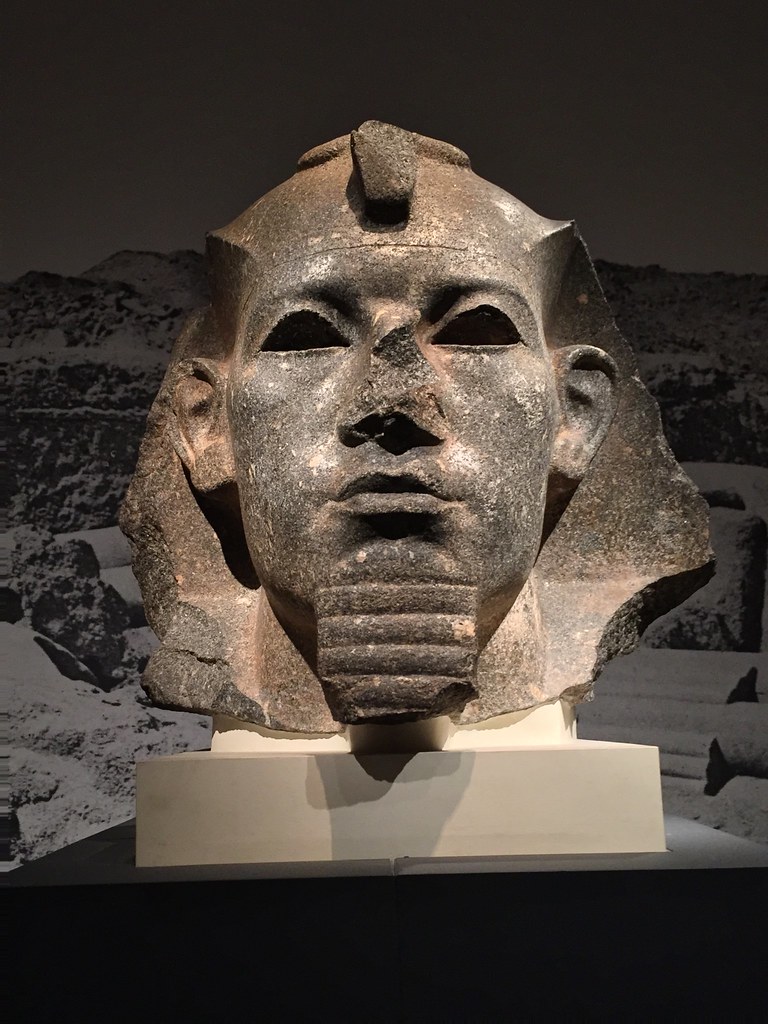
Ma’at is a significant deity in ancient Egyptian religion, embodying the fundamental concepts of truth, justice, harmony, and balance. As a goddess, she played a vital role in maintaining the cosmic order and was often depicted with an ostrich feather, which symbolized truth. Her influence extended beyond mythology into everyday life and governance, where pharaohs were expected to uphold her principles to ensure stability and righteousness.
- Ma’at is often depicted as a woman with an ostrich feather on her head, symbolizing her connection to truth and justice.
- She was considered the personification of the universal order, ethical principles, and moral righteousness.
- Ma’at’s principles guided the decisions of kings and judicial proceedings, emphasizing fairness and morality.
- In the afterlife, she was responsible for weighing the souls of the deceased against her feather to determine their worthiness for eternal life.
- Though she was a prominent concept, Ma’at was sometimes less emphasized as a personal deity compared to gods like Osiris or Ra, representing the abstract ideals vital to Egyptian culture.
Ptah: Creator God and Patron of Sculptors
Ptah is a prominent deity in ancient Egyptian mythology, revered as the creator god and the patron of craftsmen, especially sculptors and builders. He is often depicted as a mummified man holding a scepter that combines the symbols of life, stability, and power, embodying the fundamental principles of creation and craftsmanship. As a creator god, Ptah was believed to bring the universe into existence through his thought and speech, emphasizing the Egyptian conception of divine wisdom and creative power. His role extended beyond creation; he was also associated with craftsmanship, architecture, and skilled labor, making him a vital deity for those involved in building and artistic pursuits. Ptah was worshipped primarily in the city of Memphis, where he was regarded as the chief deity, and his influence permeated various aspects of Egyptian religious thought, highlighting the importance of skilled labor and divine authority in the formation of the world.
Bastet: Goddess of Home, Fertility, and Cats
Bastet is an ancient Egyptian deity primarily known as the goddess of home, fertility, and cats. She was originally depicted as a lioness, symbolizing the fierce protectiveness and strength associated with her role as a guardian of the household. Over time, her image softened into that of a domestic cat, reflecting her connection to cats as sacred animals and symbols of grace and protection. Bastet’s influence extended beyond the household, embodying aspects of love, motherhood, and nurturing, making her an essential figure in everyday Egyptian life. Although not as prominent as gods like Ra or Osiris, Bastet played a vital role in representing the nurturing and protective qualities essential to family and societal stability in ancient Egypt.
Sokar: God of the Memphite Necropolis
Sokar is an ancient Egyptian deity primarily associated with the Memphite Necropolis and serves as a protective figure overseeing the dead and the afterlife. Often depicted as a mummified man with a jackal head or as a falcon-headed god, Sokar embodies the concept of rejuvenation and the preservation of the deceased’s essence. While not as prominent as gods like Osiris or Ra, Sokar played a vital role in funerary practices and religious symbolism, symbolizing the enduring power of renewal and the guarding of sacred burial sites.
- Deity of the Memphite Necropolis
- Associated with protection of the dead and burial sites
- Symbolizes renewal, resurrection, and preservation
Iconography and Symbols Associated with Egyptian Deities
Egyptian deities are richly adorned with a diverse array of iconography and symbols that convey their unique identities and divine functions. These visual representations include specific animals, objects, and motifs that serve as powerful identifiers, reflecting their roles in cosmology, mythology, and daily life. Understanding these symbols provides deeper insight into the spiritual beliefs and cultural values of ancient Egypt, where art and religion were intrinsically intertwined.
Animal Forms and Attributes
Egyptian deities are often represented through rich iconography and symbols that convey their specific roles, attributes, and divine qualities. These symbols include particular animals, objects, and motifs that serve as visual identifiers, making it easier to recognize and interpret each deity’s significance. Animal forms play a crucial role in Egyptian religious art, with many gods depicted as or associated with specific animals that embody their powers or attributes. For example, the ibis is linked to Thoth, the god of wisdom and writing, highlighting attributes of intelligence and knowledge. The lion symbolizes strength and protection, often associated with deities like Sekhmet, the warrior goddess. The jackal represents Anubis, the god of mummification and the afterlife, emphasizing themes of death and rebirth. Attributes such as the ankh, symbolizing life, and the scepter, denoting authority, frequently appear in representations of gods and pharaohs. These symbols and animal forms not only serve as visual metaphors but also function as divine signatures, illustrating the interconnectedness of natural and supernatural elements in Egyptian religion. The use of distinctive iconography helped initiate a complex visual language that was essential for religious rituals, funerary practices, and cultural storytelling, safeguarding the identity and power of each deity across centuries.
Iconic Symbols and Sacred Objects
Ancient Egyptian deities are often depicted through a rich array of iconography and symbols that convey their divine attributes and roles within mythology. These visual elements serve as immediate identifiers, helping worshippers and artists recognize and honor specific gods and goddesses. Common symbols include the ankh, representing life; the was scepter, signifying power and dominion; and the scarab beetle, a symbol of rebirth and transformation. Many deities are associated with specific animals or animal parts that embody their qualities, such as the falcon for Horus, the ibis for Thoth, and the cow for Hathor. Sacred objects like the throne for Isis and the crook and flail for Osiris further define their divine authority. These symbols and objects are often depicted in temple reliefs, amulets, and statues, emphasizing their spiritual significance and eternal presence in Egyptian religious practice.
Temples and Cult Centers
In ancient Egypt, iconography and symbols played a crucial role in representing deities, temples, and cult centers, serving as visual identifiers that conveyed divine attributes and mythological significance. Deities were often depicted with specific motifs, such as Anubis with a jackal head symbolizing mummification, or Hathor with cow horns and a sun disk representing motherhood and fertility. The use of colors also held symbolic weight; green denoted fertility and rebirth, while gold symbolized divine radiance and immortality. Temples and sacred sites featured hieroglyphic inscriptions alongside images of the gods, often illustrating mythological scenes or divine rites. Common symbols associated with Egyptian gods included the ankh for life, the scepter representing authority, and the scarab beetle signifying rebirth. These visual elements helped worshippers identify and connect with specific deities, reinforcing religious beliefs and practices. The architecture and imagery of Egyptian temples were richly decorated with representations of gods, emphasizing their presence and divine authority within the sacred space, thus maintaining the spiritual and political order of ancient Egyptian society.

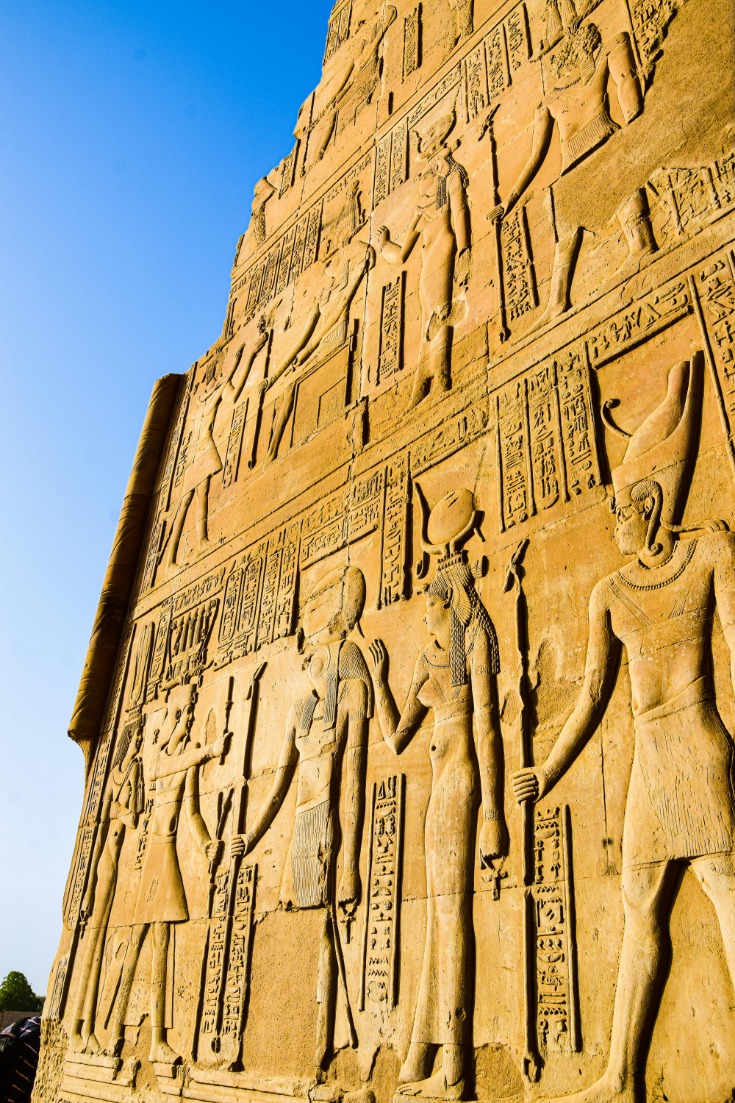
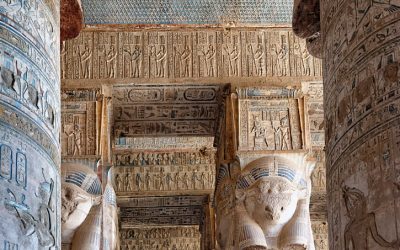
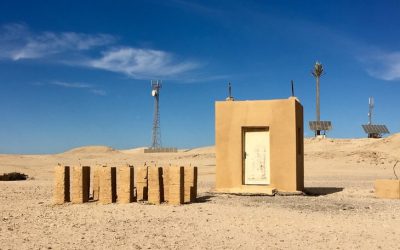
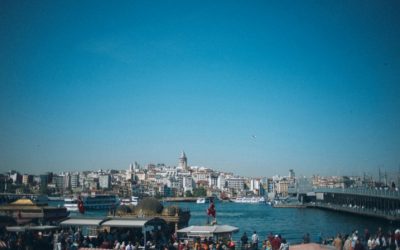
0 Comments